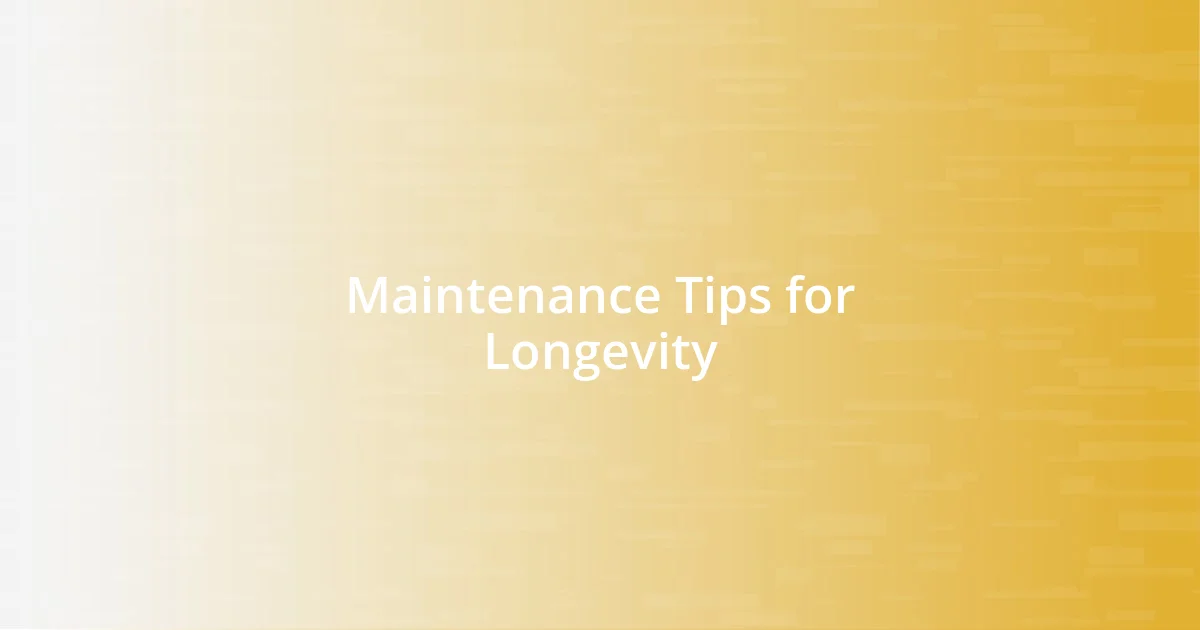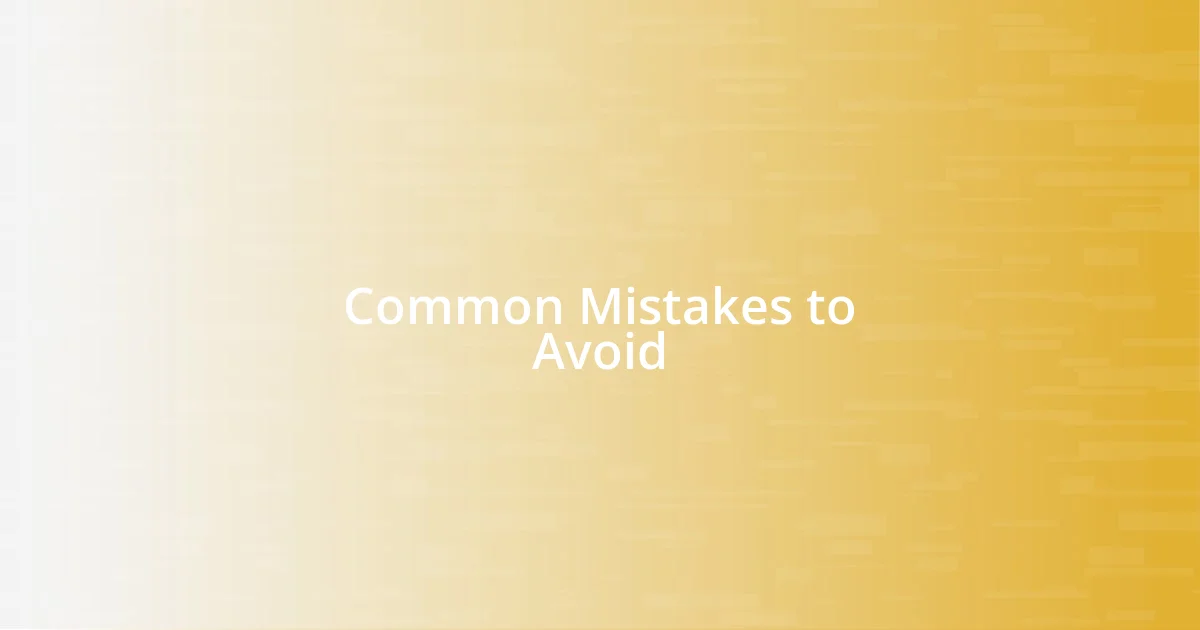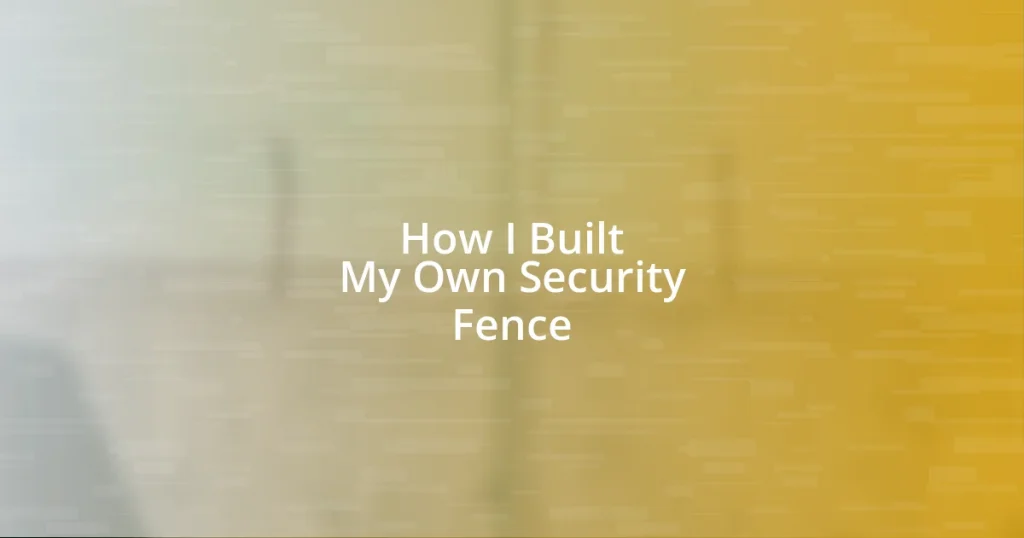Key takeaways:
- A security fence enhances safety, provides a clear boundary, and can improve property aesthetics.
- Choosing the right materials is essential; options include wood, vinyl, chain-link, wrought iron, and composite, each with its pros and cons.
- Regular maintenance, including inspections, cleaning, and applying sealant, is vital for the longevity and effectiveness of the fence.

Understanding Security Fence Benefits
One of the most immediate benefits of a security fence is the sense of safety it provides. I remember when my neighborhood experienced a rash of break-ins; I suddenly felt exposed, anxious, and vulnerable in my own home. Installing the fence didn’t just change the physical landscape—it transformed how I felt about my personal space and peace of mind.
Beyond safety, a good security fence also acts as a clear boundary. It establishes a division between your property and the outside world, which is crucial for defining personal space. I found it empowering to have that physical separation; it made me more protective of my garden and pets, as if the fence was saying, “This is my sanctuary.”
Ultimately, security fences enhance the aesthetic of a property while serving practical purposes. I’ve seen how a well-designed fence can elevate a home’s curb appeal, proving that functionality can coexist beautifully with style. Isn’t it comforting to know that you can blend security with design, creating a space that feels both safe and inviting?

Choosing the Right Materials
Choosing the right materials for your security fence is crucial. I remember standing in front of a display at my local hardware store, feeling overwhelmed by the options. Each material had its benefits and drawbacks, and I had to choose wisely to meet my needs. For instance, I was drawn to chain-link fencing for its cost-effectiveness but soon realized that it lacked privacy. In contrast, wooden fences offered a beautiful aesthetic but required more maintenance.
Here are some materials to consider:
- Wood: Provides privacy and a natural look, but can rot and requires regular upkeep.
- Vinyl: Durable, low-maintenance, and available in various colors, but can be pricier.
- Chain-link: Economical and good for visibility but lacks privacy; often requires slats for added security.
- Wrought Iron: Highly durable and stylish, providing a classic look, but can be costly and requires occasional painting to prevent rust.
- Composite: Mimics wood while offering better durability and less maintenance, although it might be more expensive upfront.
Understanding these options helped me feel more confident in my choice, balancing aesthetics, security, and my budget. It’s like assembling a puzzle—each piece has to fit just right for the whole picture to work.

Planning Your Fence Layout
When planning your fence layout, I found it invaluable to spend time visualizing the overall design before breaking ground. I sketched my property and considered where I needed the most security and privacy while also thinking about sunlight exposure for my plants. By mapping it out, I avoided potential pitfalls later on—like placing my fence too close to a tree that could eventually cause damage or obstruct my view.
You also need to consider local regulations or neighborhood guidelines that may dictate the height and materials for your fence. I remember the relief I felt when I confirmed with my local authorities that my planned design was within code. It not only saved me from future headaches but also ensured that my project would be a harmonious addition to my neighborhood.
Comparatively, if you’re debating between a straight and curved fence line, know that each option offers distinct advantages. A straight line promotes a cleaner look and is easier to construct, often complementing modern architectural styles. Alternatively, a curved design can enhance visual interest and create a more natural feel, fitting seamlessly into a garden landscape.
| Feature | Straight Fence | Curved Fence |
|---|---|---|
| Appearance | Clean and orderly | Soft and organic |
| Construction Difficulty | Easy to build | More complex |
| Cost | Generally lower | Potentially higher |
| Space Utilization | Maximized space | Can reduce usable area |

Step by Step Installation Process
The installation process kicked off with marking the perimeter of my fence. I remember pacing around my yard with a stakes and string, carefully outlining where each post would stand. This step was surprisingly exciting—like drawing the boundaries of a new adventure. Walking the line helped me visualize the final result and ensure that I wasn’t going to accidentally dig up underground utility lines.
Once the layout was set, it was time to dig the post holes. I chose to go with a post hole digger, which was surprisingly satisfying to use, though it quickly proved to be a workout! On some days, I even enlisted my neighbor to help—just a friendly face to share tips, and maybe some laughter when one of us got a little too ambitious with the digging. Having those posts firmly anchored in the ground was a huge relief; it felt like I was laying the foundation for not just a fence, but my family’s security.
With the posts in place, I moved on to attaching the panels. This might sound simple, but I learned that securing each panel required patience and precision. I had to ensure everything was level and straight—a true test of my DIY skills! I still chuckle at the memory of adjusting and readjusting the panels, just so I could see that perfect alignment. It was during this stage that I truly felt the fence transforming from an idea into a tangible reality, reflecting the hard work and planning that had come before. Would I do it all again? Absolutely! Each step taught me more about the process and brought me one step closer to my goal.

Adding Security Features
When I began considering security features for my fence, I quickly realized that simple height wasn’t enough. I opted for a taller design with additional elements like barbed wire along the top; it was a tough decision, but I knew it would discourage any potential intruders. In my mind, it wasn’t just about keeping people out; it was about creating a sense of safety for my family and me.
As I explored further security options, I found that adding motion-sensor lights near the entrance made a substantial difference. One evening, while setting them up, I felt a jolt of excitement—the thought that unexpected movement would trigger illumination felt empowering. It’s intriguing to think that a little light can go a long way in deterring unwanted attention. I wonder if other homeowners overlook such simple yet effective solutions.
Finally, installing a sturdy lock on the gate felt like the final touch to my fortress. I remember standing there, key in hand, thinking about how that little piece of hardware represented security and control. It made me realize how every detail, no matter how small, can contribute to a larger feeling of safety. Have you ever considered how something as simple as a lock can change your peace of mind? For me, it was a significant step, and it reinforced my commitment to a secure home.

Maintenance Tips for Longevity
To ensure your security fence lasts for years, regular inspections are key. I make it a point to walk around my fence at least once a month, checking for any signs of wear or damage. On one of those walks, I noticed a few loose boards—just a slight wiggle confirmed I needed to tighten them up. It’s amazing how a little time spent can prevent bigger issues down the line.
Cleaning is another crucial element of maintenance. I’ve discovered that dirt and debris can accumulate quickly, especially after storms. More than once, I found myself out with a bucket of soapy water, scrubbing away moss that crept onto my fence. It’s not just about looks; I worry that if I ignore it, moisture could weaken the materials over time. Have you ever thought about how neglecting small clean-ups can lead to larger repairs?
Lastly, applying a protective sealant every couple of years has made a noticeable difference in longevity. When I first applied it, I could almost feel the fence breathing a sigh of relief, knowing it would be protected from the elements. I often ask myself, “What would I do without this layer of protection?” It’s a small step that goes a long way—rather like putting on sunscreen before a day in the sun. Taking these maintenance measures truly gives me peace of mind, knowing my fence is solid and secure for my family.

Common Mistakes to Avoid
When building your own security fence, one common mistake is underestimating the terrain. I learned this the hard way when I failed to account for the slope in my yard. The result? Uneven heights that didn’t only look off but also compromised the effectiveness of my fence. Have you ever looked at a project and thought it was too simple, only to find out there’s more to it? Trust me, considering the ground’s level is crucial.
Another pitfall is ignoring local regulations. I thought my design was so straightforward that I wouldn’t need to check. Wrong! After starting construction, I discovered zoning laws that required permits for my fence’s height. It was a setback that taught me to always do my homework first. Imagine the frustration of having to halt a project to rectify a seemingly simple oversight!
Lastly, choosing the wrong materials is a mistake I wish I’d avoided. Initially, I opted for wood because it looked great, but I didn’t think about its durability against the elements. Just a few months in, I realized I was constantly battling rot and pests. Ever had a beautiful idea turn sour? Switching to a sturdier option later on saved me from more headaches down the line. Reflecting on it now, I understand how crucial material selection is—it can define not only how the fence looks but also how well it functions over time.















